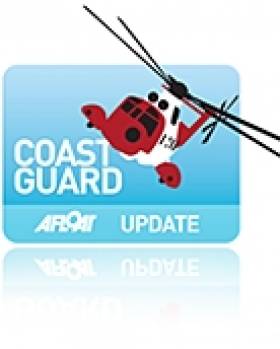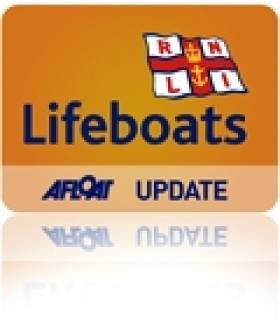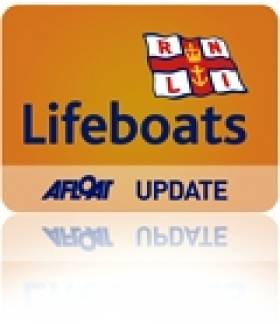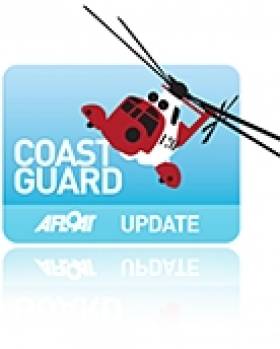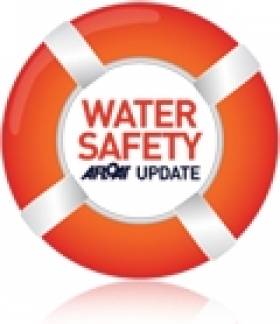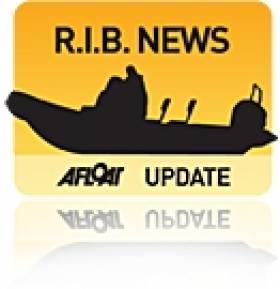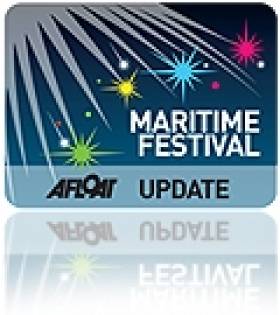Displaying items by tag: water safety
#Coastguard - The Irish Coast Guard has advised members of the public to pay special attention to water safety this week.
The warm, sunny weather with temperatures in the high 20s is forecast to last for the rest of the week and the weekend, when traditionally many people take to the water and enjoy outdoor activities.
Irish Coast Guard manager Declan Geoghegan said: “Warmer weather encourages everyone to enjoy the outdoors and brings thousands of people to our coastlines, to our beaches and the outdoors. We want everyone to enjoy the outdoors but to remember to take simple, basic advice about staying safe on the water and along cliff paths, when hill walking and enjoying the outdoors.
"Time and again, we see people ignoring basic safety advice, taking risks and then getting into difficulty, sometimes leading to loss of life. The coastguard is a 24/7 service but we must again advise caution as too many people are taking risks and ignoring our advice.”
Last month the Irish Coast Guard launched its first TV water safety campaign, as well as a summer campaign designed to protect children on beaches and near coastlines. The coastguard made available thousands of free waterproof wristbands under the ‘Give Us A Hand’ campaign.
“This summer we began our 2013 safety awareness campaign in May and we want to strongly get across the safety message to families, leisure users and the fishing industry about going out on the water," said Geoghegan.
"We want everyone to enjoy the outdoors this summer weather but remember to heed our advice to ensure that you and your family and friends stay safe."
#Rescue - Castlerock RNLI lifeguards rescued a family of six after they got into difficulty on the town’s seaside beach in Co Derry yesterday (7 July).
Senior RNLI lifeguard Gordon Clark was patrolling busy Castlerock beach when at he noticed a person in the water waving for help a short distance to the right of the flagged zone on the beach around 5.30pm.
The family of six – including a man, woman and four children – were all on bodyboards when they got caught in what appeared to be a flash rip, a strong current running out to sea.
After radioing for assistance, Clark swiftly entered the sea with a rescue tube. He was quickly joined in the rescue operation by his RNLI lifeguard colleagues Jenny Thompson and Ray Cunningham.
Clark and Thompson proceeded to safely ferry the children, followed by their parents, to the shore, where they were checked over to ensure they hadn’t taken on any water. All were safe and well.
Speaking following the rescue, Mike Grocott, RNLI lifeguard manager for Northern Ireland, said: "Rip currents often catch people out because they can be difficult to spot, and research shows that most people don’t know how to identify one. They are a major cause of incidents that the RNLI’s lifeguards deal with each season.
"Anyone who gets caught in a rip should try to remain calm, raise their arm in the air to signal for help like the family member did today. If they feel they can swim, they should swim parallel to the beach until free of the current, and then head for shore."
With temperatures expected to soar this week, Grocott reminded people to be mindful of the RNLI’s key safety recommendations – choose a lifeguarded beach and swim between the red and yellow flags, which mark the safest area to swim and are an indicator that lifeguards are on duty.
Donaghadee RNLI Rescues Man In Boat Breakdown
#RNLI - Donaghadee RNLI has rescued a man after his boat got into difficulty off the Co Down coast.
- In good weather conditions, the volunteer crew launched the all-weather lifeboat at 3.07pm yesterday (Wednesday 26 June) to go to the aid of a casualty off Mew Island.
It followed a request by Belfast Coastguard which had received a call from the owner of the 4m boat to say his vessel had broken down and had starter motor problems.
The lifeboat located the boat north of Mew Island, where it was taken safely under tow by the crew and brought to Donaghadee Harbour.
Earlier in the week, a group of young people from the RNLI Storm Force visited the Donaghadee lifeboat station for a guided tour that emphasised the importance of safety on the water.
The children and their parents were given a warm welcome by coxswain Phillip McNamara and members of the station, who explained the work they do when they respond to emergencies - including getting into their lifeboat gear and jackets in a hurry!
Skerries RNLI Responds To Concerns Over Shore Walkers
#RNLI - Skerries RNLI in North Co Dublin were requested to launch by the Irish Coast Guard on Monday evening (24 June) following a call from a concerned member of the public regarding a group of people walking back to shore from Shenick Island.
The volunteer lifeboat crew launched their inshore lifeboat Louis Simson shortly before 9pm and proceeded directly to scene.
The caller had reported that the group were attempting to walk ashore from the island and were already in water up to their waists. However, shortly after arriving on scene, communication was received from Skerries Coastguard that the people in question had made it safely to shore.
Before returning to base, Skerries also requested the lifeboat to check on another group of people who were on the shoreline of Colt Island. This turned out to be a group of kayakers who were simply having a rest so the lifeboat was stood down and returned to station.
Speaking afterwards, Skerries RNLI volunteer lifeboat press officer Gerry Canning said: "It’s not unusual for people to get caught out by the quickly rising tide. We would encourage people to check the tide tables and always allow plenty of time to get to where you are going safely."
In related news, an updated and interactive edition of the RNLI’s safety handbook Sea Safety: The Complete Guide is now available free online.
The Complete Guide is the RNLI’s handbook of essential information for all those who go to sea. Its new interactive format – including videos, quizzes and challenges - means that sea safety is available on mobiles, tablets and laptops and at the tip of boaters’ fingertips.
RNLI coastal safety manager Tony Wafer said: "The Complete Guide gives more in-depth advice on how to follow these principles and stay safe on the water. It’ll cover everything from how to plan your time on the water, what safety equipment to take and how to use it, and what to do in an emergency."
#Coastguard - The Irish Coast Guard (IRCG) has launched a new summer water safety campaign designed to protect children on beaches and near coastlines.
The IRCG is distributing thousands of free waterproof wristbands under the ‘Give Us A Hand’ campaign.
Parents or guardians can write their phone numbers on the wristband so that lifeguards, emergency services or members of the public can contact the child’s parents if the child becomes lost or becomes separated.
The wristbands have been made available to IRCG volunteer units for distribution through schools, lifeguard stations and maritime community events around the country. The wristbands carry a message reminding the public to call 112 and ask for the coastguard for beach, water or cliff emergencies.
The wristband concept is very simple: it’s made of water resistant Tyvek material which is strong and difficult to tear. The bands were designed and developed free of charge by coastguard volunteers and are a practical, simple way to assist families.
Finding a lost child at a busy beach is a very stressful experience for both parent and child. Coastal or waterside areas present further dangers with open water, sand dunes and exposed cliffs all adding to concerns.
Following a day at the beach, the band can easily be removed using scissors and disposed of by a parent or guardian.
This is the latest stage in the Irish Coast Guard’s summer safety campaign headed by its first TV advertising campaign, as previously reported on Afloat.ie.
Meanwhile, the Galway Advertiser reports that Galway City councillors have approved €6,000 in funding for promoting water safety in the city.
Sunny Days See Coastguard's Busiest Period in Two Decades
#Coastguard - Last weekend 8-9 June was the Irish Coast Guard's busiest since 1991 for search and rescue indigents, as reported yesterday on Afloat.ie.
Today's Irish Examiner goes deeper into the figures, which show more than 53 coastguard search and rescue incidents took place around the country last Saturday and Sunday - ranging from missing persons to swimmers in difficulty, vessels broken down, missing children, personal watercraft and speedboats operating in a hazardous way and urgent medical evacuations.
In addition, the Irish Coast Guard's rescue helicopter fleet – not including any of the other IRCG units – was tasked a massive 18 times over the weekend alone.
The fleet was this week bolstered by the arrival of two Sikorsky S-92s previously flown by the British Coastguard.
Set to operate from Shannon, the choppers join the state-of-the-art Rescue 115 which has been operational since last year, and was last week on course to conduct the Irish Coast Guard's longest range mission ever.
Irish Coast Guard Launches TV Water Safety Campaign
#Coastguard - The Irish Coast Guard (IRCG) has launched its new 'Stay Safe on the Water' TV advertising campaign aimed at families, leisure users and the fishing industry during the busy summer months.
This is the coastguard’s first TV advertisement, having its premiere on RTÉ One television this evening after 6pm.
The IRCG was motivated to launch its first TV water safety campaign following the success of the Road Safety Authority (RSA) TV campaigns. The new 20-second adverts will run from now until the end of August.
Coastguard statistics have recorded 11 deaths by drowning in Irish waters so far this year, and last weekend was the Irish Coast Guard's busiest since 1991 for search and rescue incidents.
Speaking at the launch, IRCG manager Declan Geogheghan said: “This summer we began our 2013 safety awareness campaign in May and we want to strongly get across the safety message to families, leisure users and the fishing industry about going out on the water.
"We want everyone to enjoy the outdoors this summer weather but remember to heed our advice to ensure that you and your family and friends stay safe.”
Last Saturday and Sunday saw more than 53 coastguard search and rescue incidents taking place around the country. Of these, 21 were co-ordinated by the Dublin Marine Rescue Co-ordination Centre (MRCC), 18 by Valentia MRCC and 14 by Malin MRCC.
These incidents ranged from missing persons, swimmers in difficulty, vessels broken down, missing children, personal watercraft and speedboats operating in a hazardous way and urgent medical evacuations.
Coastguard helicopters alone – not including any of the other IRCG Units – were tasked a massive 18 times over the weekend.
“The pleasant, warm weather brings thousands of people to our coastlines, to our beaches and the outdoors," said Geoghegan. "We want everyone to enjoy the outdoors but to remember to take simple, basic advice about staying safe on the water and along cliff paths, when hill walking and enjoying the outdoors.
"Time and again, we see people ignoring basic safety advice, taking risks and then getting into difficulty, sometimes leading to loss of life. The coastguard is a 24/7 service but we must again advise caution as too many people are taking risks and ignoring our advice.
For specific advice and information on any water and coastal activity, visit www.safetyonthewater.ie.
Throughout the summer, as at other times of the year, Irish Coast Guard units throughout Ireland will patrol our waterways and coastlines issuing safety advice and information to holidaymakers, tourists and marine users.
The following are general safety tips and advice from the IRCG to help enjoy the water and coastal activities in your area this weekend and throughout the summer:
Swimming
Only swim at beaches and waterways that have lifeguards on duty and pay attention to the safety flags. Ask the lifeguard for advice about safety and water conditions and adhere to their instructions. Avoid using inflatable toys, such as li-los and rubber rings, on the water.
Cliff Walking
There is safety in numbers, so never be alone if possible. Let somebody know when and where you are going and what time you will be back. Stay well away from the cliff edge, both top and bottom. Don’t attempt to rescue people or pets if they fall over the edge. If assistance is required dial 999 or 112 and ask for the coastguard.
Water Sports and Coastal Activities
Before going to sea check local weather conditions and tides in the area. Wear correctly maintained and fitting lifejackets that are suitable for the activity. Lifejackets are of no use unless they are worn. Ensure your craft is fit for purpose. Always advise someone as to where you are going and the time of your intended return. Do not overload the craft. If you are in difficulty or see someone in difficulty and requiring assistance dial 999 or 112 and ask for the coastguard.
Finally, under no circumstances should anyone ever engage in water activities under the influence of alcohol.
#Drowning - Three drownings over the weekend have underlined the importance of safety on the water during the current sunny spell.
In Galway, residents of Moycullen were mourning the loss of a Lithuanian man who drowned while swimming with friends in Ballyquirke Lake on Saturday evening 8 June, according to Galway Bay FM.
And RTÉ News reports of a similar incident in Cork in the early hours of this morning 10 June, in which a 21-year-old man drowned after getting into difficulties in the River Lee near Ballincollig.
The young man is also believed to have been swimming with friends after another hot day across the country, according to The Irish Times.
Elsewhere in Cork, RTÉ News says a 17-year-old has died after drowning in the River Blackwater.
Earlier it was reported that the teen was in a serious condition after getting into difficulties while swimming with friends at a bathing spit known locally as Lisheen Bridge, and had been in the water for some time before he was recovered.
#KillCord - An official report into the tragic speedboat accident in Cornwall earlier this month that killed a father and daughter says that the driver was not attached to the boat's 'kill cord'.
As previously reported on Afloat.ie, BSkyB executive Nick Milligan and his eight-year-old daughter Emily were struck by the family's runaway RIB after being thrown overboard from the vessel on the afternoon of Sunday 5 May.
Four other family members were struck by the runaway boat as it circled in the water off Padstow. Nick's wife Victoria and four-year-old son Kit are recovering after sustaining "life-changing" leg injuries.
Police were reportedly investigating the role played in the incident by the boat's kill cord or safety lanyard, a device attached to the throttle that should automatically cut engine power if the driver is thrown from the vessel.
Now The Guardian reports the Marine Accident Investigation Branch's (MAIB) conclusion that the 8m Cobra RIB was fitted with a kill cord, but it was not attached to the driver.
It has not yet been determined who was driving the speedboat at the time of the accident, nor is it clear how the family was thrown from the vessel.
The report added: "The kill cord serves only one purpose, to stop the engine when the driver moves away from the controls.
"To ensure that this tragic accident is not repeated it is essential that all owners and operators of vessels ensure they are fitted with kill cords."
An Tostál Fest Rescheduled For End of May
#AnTostal - Galway's An Tostál maritime festival will take place on 26 May after strong winds forced the postponement of the originally scheduled date last Sunday, according to the Galway Independent.
Cian O’Lorcáin of the organisers said the decision to delay the event was made "for the benefit of water safety. We were really thinking of the crews on the water because, with the winds, it could have proved hazardous...
"Safety is the number one thing for us so when that couldn't be guaranteed, we decided to postpone."
As previously reported on Afloat.ie, the festival - reactivated in 2011 after a 50-year gap - celebrates Galway's maritime traditions with currach racing along the Salthill promenade. This year's event is also set to feature a Galway Hooker parade of sail.



























